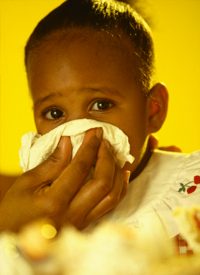
U.S. health officials say that the H1N1 flu has killed 76 children and is getting worse, yet some cities that were hard hit by the swine flu in the spring are not seeing a resurgence.
The U.S. Centers for Disease Control said that H1N1 is spreading in many states even though it is not normally the time of year for widespread flu infections. So far, most of those who are dying from the H1N1 flu, including children, are those who have other health conditions making them more vulnerable.
Reuters mentioned on October 9 that Dr. Anne Schuchat of the CDC commented to reporters: “We saw a peak of pediatric deaths starting in April, May, June. It’s starting to shoot up again.”
Many of the 76 children who have died were suffering from neurological conditions like cerebral palsy or muscular dystrophy, the CDC said. This compares to 68 deaths during the last flu season from September 2008 to April 2009.
Even as the CDC was emphasizing the severity of the outbreak, the New York Times wrote on October 8 that some areas were reporting fewer cases now than they had seen in the spring.
According to the Times, “Public health officials say there appears to be a pattern of areas that had big outbreaks in the spring, like New York, Boston and Philadelphia, seeing less swine flu now.” New York City health officials believe that even though only 10 to 20 percent of the city’s population became ill with the H1N1 flu last spring, anywhere from 20 to 40 percent of the population were exposed and developed immunity.
While it is too soon to say whether or not this will lead to a lessening in the severity of a second round of infections, the immunity theory is gaining some credence. New York City health commissioner Dr. Thomas Farley even presented the theory at a conference on national preparations to deal with H1N1 held in New York on October 2. “We’re not seeing illness in the city right now,” Dr. Farley informed one of the conference sessions. “We’re seeing essentially no disease transmitted in the city. We had 750,000 to one million sick people last spring. We were the hardest-hit city then. So we have a lot of immune people right now.”
Other cities appear to be experiencing the same phenomenon. Boston saw 11 percent of adolescents come down with swine flu in the spring, but now, according to Dr. Anita Barry, director of the infectious disease bureau of the Boston Public Health Commission, school officials are reporting very few cases of the flu.
Connecticut, Seattle, and Utah also suffered heavily from H1N1 flu this past spring, but they now appear to experiencing a much lighter case load, reported Donald Olson, research director for the International Society for Disease Surveillance.
It is still too early in the flu season to draw definite conclusions, but amid the CDC’s constant dire warnings, any hopeful news is definitely welcome.



